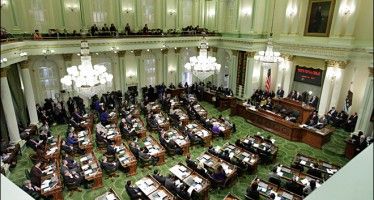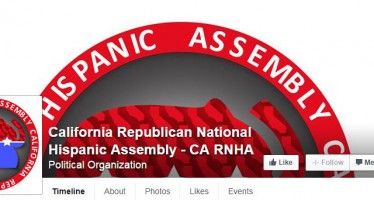State touts 'green' progress
March 29, 2010
By KATY GRIMES
In 2005 Gov. Arnold Schwarzenegger ordered all state buildings to be 20 percent more energy efficient by 2015 and “encouraged” the private sector to do the same. And now, the Department of General Services (DGS) has issued a “Green” Progress Report (dated Spring 2010) outlining how the state is doing.
The governor’s Executive Order S-20-04, known as the “Green Building Initiative,” and the accompanying Green Building Action Plan, were slated as the roadmap for identifying how and what needs greening-up in California.
The Executive Order states that all state employees and all state entities under the governor’s jurisdiction are to take all practical and cost-effective measures to implement the goals specific to facilities owned, funded or leased by the state beginning with state buildings.
The U.S. Green Building Council (USGBC), a non-profit trade organization, has developed green building rating systems that advance energy and material efficiency and sustainability known as Leadership in Energy and Environmental Design (LEED).
Consequently all new state buildings and major renovations of 10,000 sq. ft. and over will be designed, constructed and certified at LEED. Building projects less than 10,000 sq. ft. are required use the same design standard, but LEED certification is not required.
The Green Action team is an interagency team chaired by the Secretary of the State and Consumer Services Agency. The Director of the Department of Finance, and the Secretaries of Business, Transportation, and Housing; Environmental Protection; Resources; Education, and a commissioner from the California Public Utility Commission make up the rest of the team.
The Green Building Action Plan states that the Green Action Team “shall oversee and direct progress toward the goals of the Green Building Order, and shall recommend any additional actions, mandates or legislation that may be warranted to ensure progress consistent with the Green Building Order.”
What are the accomplishments in the Green Progress report?
Thus far, some of the listed “accomplishments” are common sense solutions: turning off lights, recycling paper products, reducing waste, improving building operational efficiency, cutting water use and using environmentally-friendly cleaning products. The report also lists as accomplishments using recycled paper products, low-mercury fluorescent lights, and environmentally-friendly computers and printers.
The DGS is making the state vehicle fleet “greener and leaner” by introducing clean technology to the fleet such as hybrid, alternative fuel, fuel cells and electric vehicles.
This past January, Gov. Schwarzenegger announced the first-in-the-nation mandatory Green Building Standards Code (CALGREEN) requiring all new buildings in the state to be more energy efficient and environmentally responsible.
CALGREEN will require every new building constructed to reduce water consumption by 20 percent, divert 50 percent of construction waste from landfills, install low pollutant-emitting materials and separate water meters for nonresidential buildings’ indoor and outdoor water use, and install moisture-sensing irrigation systems for larger landscape projects. CALGREEN will require mandatory inspections of furnaces, air conditioners and mechanical equipment.
The report does not specify which agency will conduct these inspections, at what cost and what the penalties are for non-compliance. However, in section 3.3.3. listed under “Leadership” of the Green Building Action Plan, the Green Action Team was given the following authority: “That the Green Action Team, in cooperation with other agencies and organizations as appropriate, shall oversee and direct progress toward the goals of the Green Building Order, and shall recommend any additional actions, mandates or legislation that may be warranted to ensure progress consistent with the Green Building Order.”
The final accomplishment item of the “Green” Progress Report is encouraging other state agencies to “travel green” by reducing business trips and instead use videoconferencing and webcasting. State employees are encouraged to carpool and “telework.”
At his January 2010 press conference, the governor said, “The mandatory code provisions will now become the baseline of regulated green construction practices in the country’s most populous state.” Without costs assigned, in a state with a massive deficit, the drive to be the first green state in the country appears to be more important than to be the most fiscally sound and prosperous state. If we get our finances in order, California could actually afford to implement this ambitious plan without taxing and regulating the citizens even more.
For more information, visit the state’s website: Welcome to Green California!
Related Articles
Is Assembly speaker playing game of chicken over 72-hour rule?
SACRAMENTO – California voters in November overwhelmingly passed Proposition 54, a constitutional amendment to promote transparency by requiring all bills
Senate Ed committee balances school needs, parents, unions and worms
At a meeting of the Senate Education Committee on Wednesday, a dirty little secret about the Capitol came out. There
CA GOP labors to read Latino tea leaves
Though the political ground has been shifting in California, new research is giving Republicans only hints about how to woo Latino voters. Much




